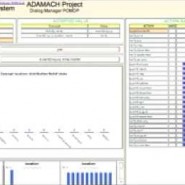Conversational Machines

A conversational agent is a software that is able to answer specific or generic users requests, to interact and to help accomplish his or her goals. These goals maybe explicitly defined as in the case of an artificial intelligent agent helping users plan for a vacation trip. In other cases goals may not have been clearly defined as in a problem solving task or in a socially entertaining robot interaction.
The complexity of this system varies a lot and include the ability to process a multimodal human inputs, acoustic scene sensors and processing massive amount of data. We have been developing technology for such agents — spoken dialog systems for telephone, desktop browsers, smartphones, social bots and consumer robots since the early nineties.
The Demos below demonstrate various agents and their components developed over the years.
Roving Mind — Amazon Alexa social bot
A group of students from Signals and Interactive Systems Lab at University of Trento ( Italy ), was chosen as one of the 12 sponsored university teams all over the world to participate to the Alexa prize, a one-year long competition sponsored by Amazon to advance conversational Artificial Intelligence. The aim of the competition is to create a social computer (“bot”) able to have coherent and engaging conversations with humans about popular topics such as politics or sport.
Paper: Cervone A., Tortoreto G., Mezza S., Gambi E. and Riccardi G., “Roving Mind: a balancing act between open–domain and engaging dialogue systems ”, 1st Alexa Prize Conference, Las Vegas, 2017.
2017
Conversational Agents
2013
2009 ( pre-iPhone, pre-SIRI, pre-Alexa, pre-HeyGoogle )
Talk @ AVIOS Conference and Demo:
Dialog Management with Reinforcement Learning using POMDPs
Conversational agents need to make decisions through a very large set of alternatives reacting to users’ input and choose the best answer that most likely will lead to the accomplishment of a task. In this demo we show the internal belief states of such machines using so-called Partially Observable Markov Decision Processes. In this demo it’s possible to see all the intermediate steps in the decision processes associated to the voice of the user and the prompt of the system.
Varges S., Riccardi G., Quarteroni S. , and Ivanov A. V., “ POMDP Concept Policies and Task Structures for Hybrid Dialog Management” , ICASSP, Prague, 2011
